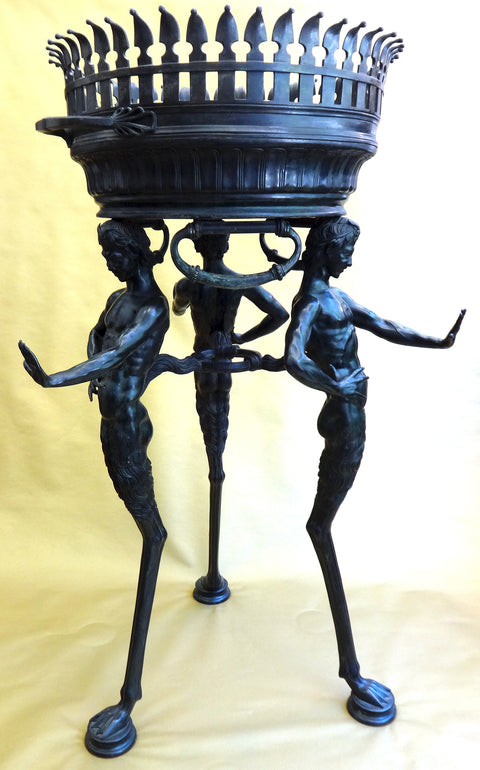
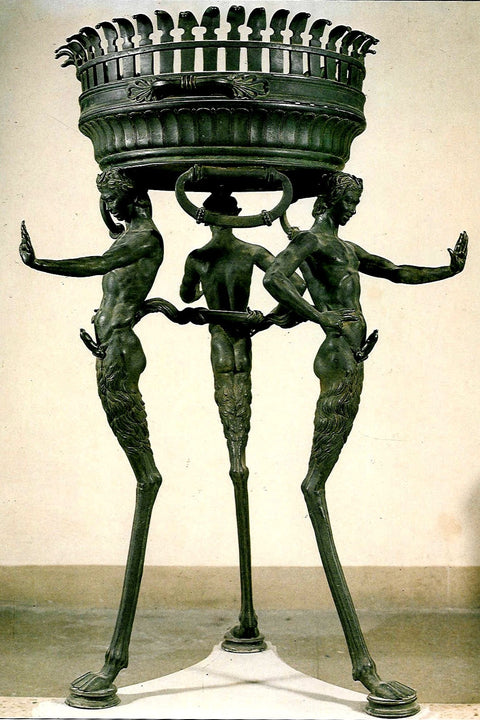
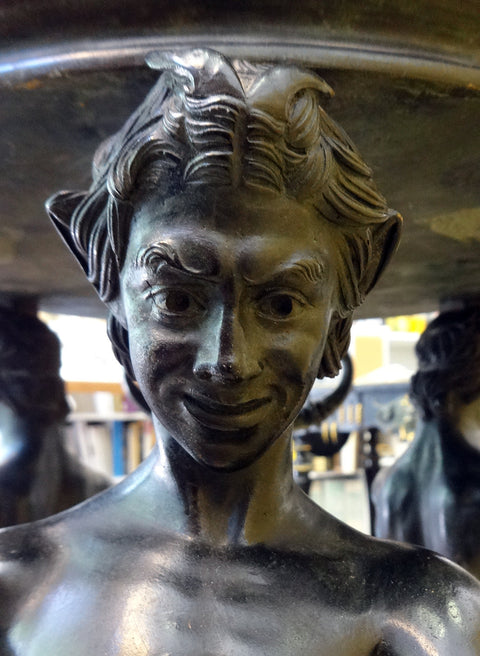
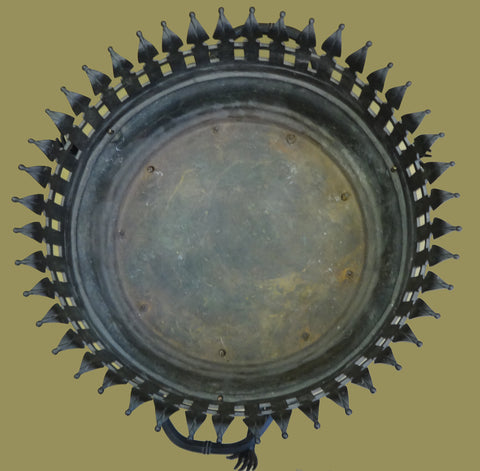
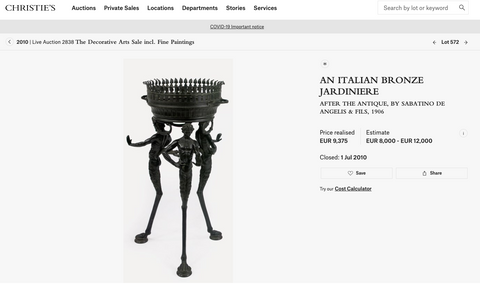
AN ITALIAN BRONZE JARDINIERE AFTER THE ANTIQUE, BY SABATINO DE ANGELIS & FILS, 1906
AN ITALIAN BRONZE JARDINIEREAFTER THE ANTIQUE, BY SABATINO DE ANGELIS & FILS, 1906
The pierced slatted basket with carying handles supported by three herm monopodiae, the inside of the basket (missing) inscribed Sab de Angelis & Fils, Naples 1906
H. 89 cm; W. 56 cm; D. 42 cm.
After the : Roman Original Brasero Bronze tripod with itiphallic Satyrs - 1st century BC - from Julia Felix house at Pompeii - Naples, Archaeological Museum ("Secret Room").
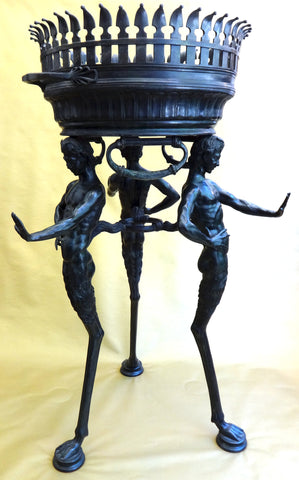
In the second half of the xixth century, European artists travelling about the archeological sites of the Mediterranean world created a particular pictorial style. The renewal of the Pompei excavations provided them with a privileged ground for staging a more intimist history relying more on a carnal contact with the daily objects of the Ancients than on literary texts. This “pictorial history” that might be referred to as emotional is nonetheless supported by a genuine concern for erudition.
Dans la seconde moitié du xixe siècle, des artistes européens voyageant sur les sites archéologiques du monde méditerranéen, créent un style pictural particulier qui s’adonne au plaisir de la restitution. Le renouveau des fouilles à Pompéi leur offre un terrain de prédilection pour mettre en scène une histoire plus intimiste qui s’appuie plus sur un contact charnel avec les objets du quotidien des Anciens que sur les textes littéraires. Cette « histoire picturale » que l’on pourrait qualifier d’affective est néanmoins soutenue par un véritable souci d’érudition.
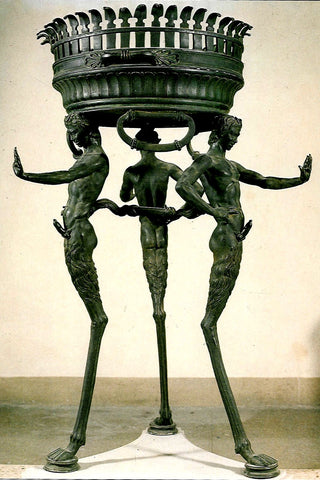
Bronze. 1st century CE.
H. 91.5 cm; W. 57 cm; D. 47 cm (top of the basin).
Inv. No. 27874.
Naples, National Archaeological Museum.
From the sacrarium of the complex of Julia Felix in Pompeii (II. 4. 6). Found in June 15, 1755.
Italiano: Tripode di bronzo con satiri itifallici, da Pompei (Praedia di Julia Felix), oggi nel Museo Archeologico di Napoli, sezione Gabinetto Segreto (inv. nr. 27874).
Español: Objeto para mantener el fuego con motivos decorativos eróticos, encontrado en Pompeya
Français : Tripode de bronze aux satyres ityphalliques : brasero en provenance de Pompéi, aujourd'hui au musée archéologique de Naples, section Gabinetto Segreto (Cabinet secret). Numéro d'inventaire : 27874
The House of Julia Felix is a large Roman villa in the ruined city of Pompeii. It was the residence of Julia Felix, who converted portions of it to apartments after a major earthquake in 62 CE, a precursor to the eruption of Mount Vesuvius in 79 CE that destroyed the city. Archaeological excavations began in 1755 and continue to this day. As the residence of multiple family units, it is an invaluable resource for providing insights into the daily lives of the people of Pompeii.